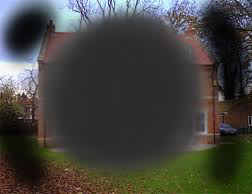Age-related macular degeneration (AMD) is a common eye disease associated with aging that gradually destroys sharp central vision. It is one of the leading causes of legal blindness and vision impairment in older Americans.
The progression of AMD can be slow or rapid, but the deterioration of central vision generally occurs over a period of a few years. If you experience the following, see your Eye Doctor right away:
 Straight lines appear wavy
Straight lines appear wavy- Difficulty seeing at a distance
- Decreased ability to distinguish colors
- Inability to see details, such as faces or words in a book
- Dark or empty spots block the center of your vision
The following individuals may be at risk:
- People over age 50 (AMD is the leading cause of visual impairment in Caucasians over 50)
- People with hypertension
- People that smoke
- People with a family history of AMD
Click Here to Take the Macular Degeneration Test (Amsler Grid)
There are two forms of macular degeneration:
“Wet” which is the rarer, but more severe form macular degeneration.
- A conventional laser treatment and photodynamic therapy (PDT) treatment is used which can reduce the risk of moderate to severe vision loss in patients with a few very specific forms of “wet” degeneration.
- Intraocular antineovascular injections.
- Other treatments that are being investigated include, and the insertion of a “retinal chip” to restore vision loss.

“Dry” which is the most common form.
- Studies have found that high levels of zinc and antioxidants play a key role in slowing the progression of macular degeneration in advanced cases.
If you are at risk for macular degeneration early detection and treatment is the best defense against losing your vision.

